The second decade of the 21st century is marked by a revolutionary innovation! That’s none other than Artificial Intelligence (AI). From automation of economics, and computer-integrated manufacturing, to white-collar machines, AI is taking over almost every corner of our planet. And guess what? The marketing sector has also been grasped by AI… Yes, AI is transforming the marketing landscape too!
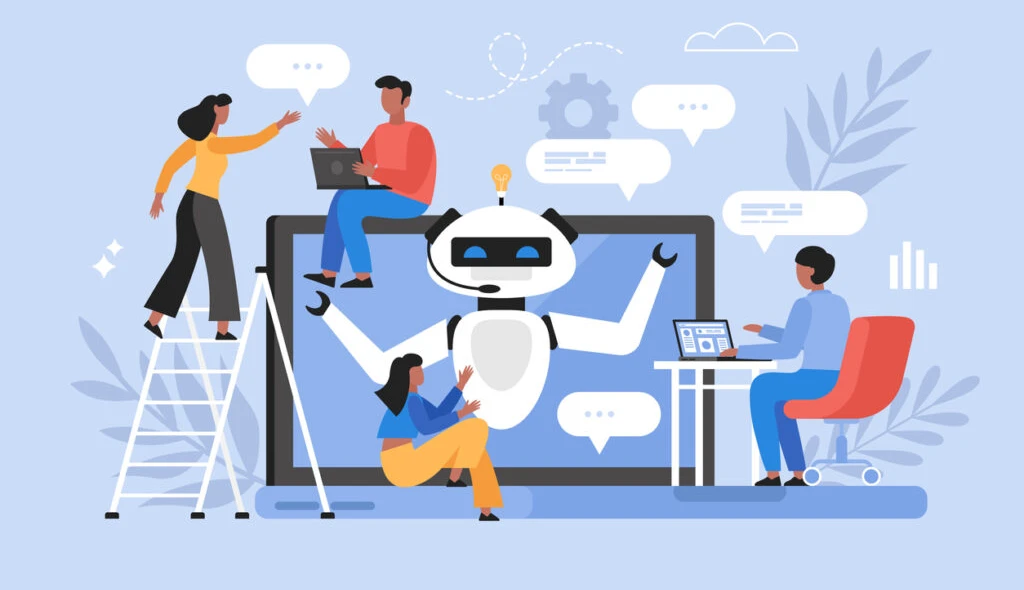
In our fast-paced digital world, the advertising business is always changing to match what you like and the new tech stuff. A big change recently is using Artificial Intelligence (AI) in ads. AI is making a big difference in how companies do advertising. It helps ads work better, fit your likes, and save time.
So, in this article, we’ll talk about AI in advertising and how it’s changing how companies do marketing.
Stay tuned!
1. Data-Driven Insights: AI-Powered Customer Understanding

AI is like a super tool for getting, studying and making sense of lots of data. It helps marketers understand what you like, how you act, and what’s trending. With AI, they can make smart plans for how to advertise and decide things better.
How? You may wonder. Well, let me explain to you with a simple example.
Example- Online Shopping
Imagine you’re a customer who loves shopping online. Every time you browse a website or click on something, the website collects all sorts of information about what you’re interested in. This could include the type of products you look at, how long you stay on certain pages, and what you end up buying.
Now, this is where AI comes into play.
Let’s say you visit an online clothing store, and they use AI. The AI technology can look at all the data from your previous visits and those of other customers. It might be noticed that many people like you tend to buy more clothes in certain colors or styles during specific seasons.
Based on this data, the AI can help the store make decisions. For instance, it could recommend clothing items in your favorite color or style that are currently in season. So, when you visit the website, you see suggestions that are more likely to interest you, making your shopping experience better.
In this way, AI is like a super-smart helper for businesses. It looks at lots of data, finds patterns, and then uses that information to give you, the customer, a more personalized and enjoyable experience.
2. Scaling Personalized Experiences with AI: To Keep You Engaged
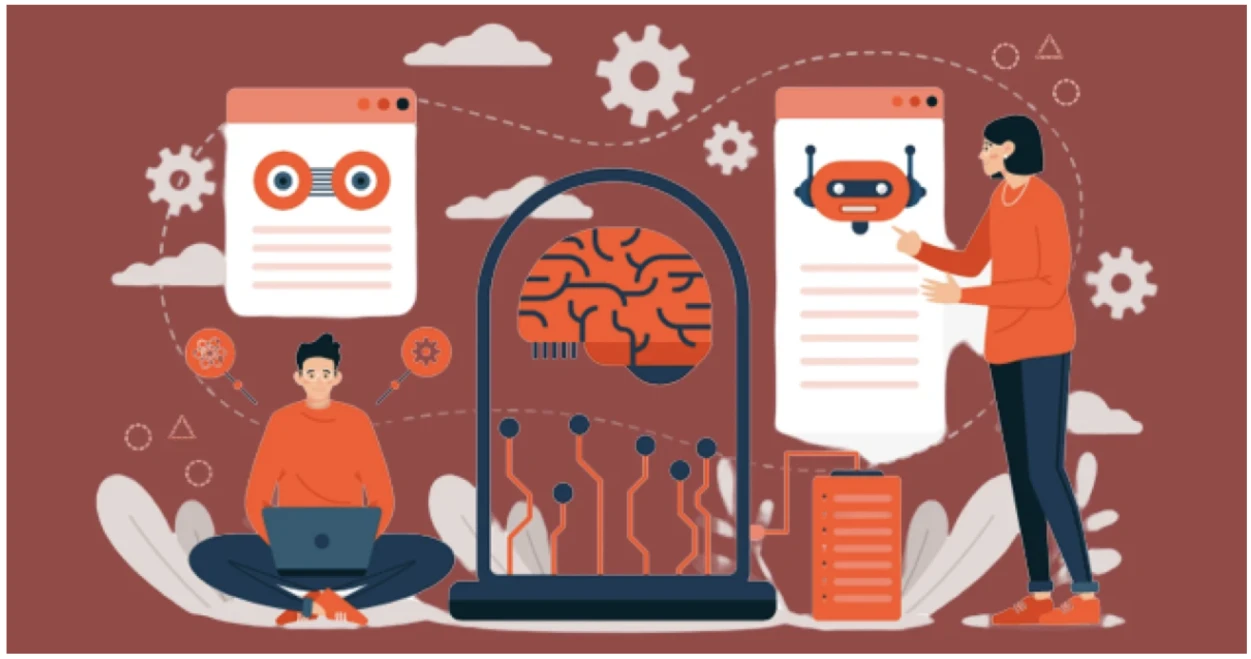
Artificial intelligence empowers marketers to create personalized interactions on a larger scale. Using AI algorithms, they can examine individual customer information like what you’ve searched for, what you’ve bought, and your personal details. With this knowledge, they can suggest things and show content that’s just right for you.
This kind of personal touch makes your interactions with businesses more interesting and satisfying. It even keeps you coming back for more, building a stronger bond between you and the company.
Let me explain it to you with the help of a common example- Netflix. I’m sure you must have used this OTT platform for entertainment. So, this will help you to understand the concept better.
Example- Recommendation of shows on Netflix
When you use a service like Netflix, it collects data about what shows or movies you watch, how long you watch them, and even when you watch them. Now, AI steps in to make your streaming experience even better.
Imagine you enjoy watching science fiction series. AI algorithms analyze your viewing history and see that you’ve recently binge-watched a few sci-fi shows. Based on this data, Netflix might suggest more sci-fi series or movies that match your interests. This way, when you log in, you’re more likely to find content that excites you, and you don’t need to spend time searching through genres that don’t interest you.
AI doesn’t stop there. It also considers when you watch. If you typically watch shows in the evening, Netflix might suggest new releases or trending content during that time, making your viewing experience more convenient and enjoyable.
This level of personalization makes your time spent on the platform more engaging, and it keeps you satisfied as a user. It’s not just about Netflix; many other services use AI to understand your preferences and provide tailored content recommendations.
So, AI-powered personalization extends beyond shopping and into various aspects of our digital lives, from entertainment streaming to social media feeds, making the content and experiences we encounter more relevant and enjoyable.
3. Predictable Future Trends
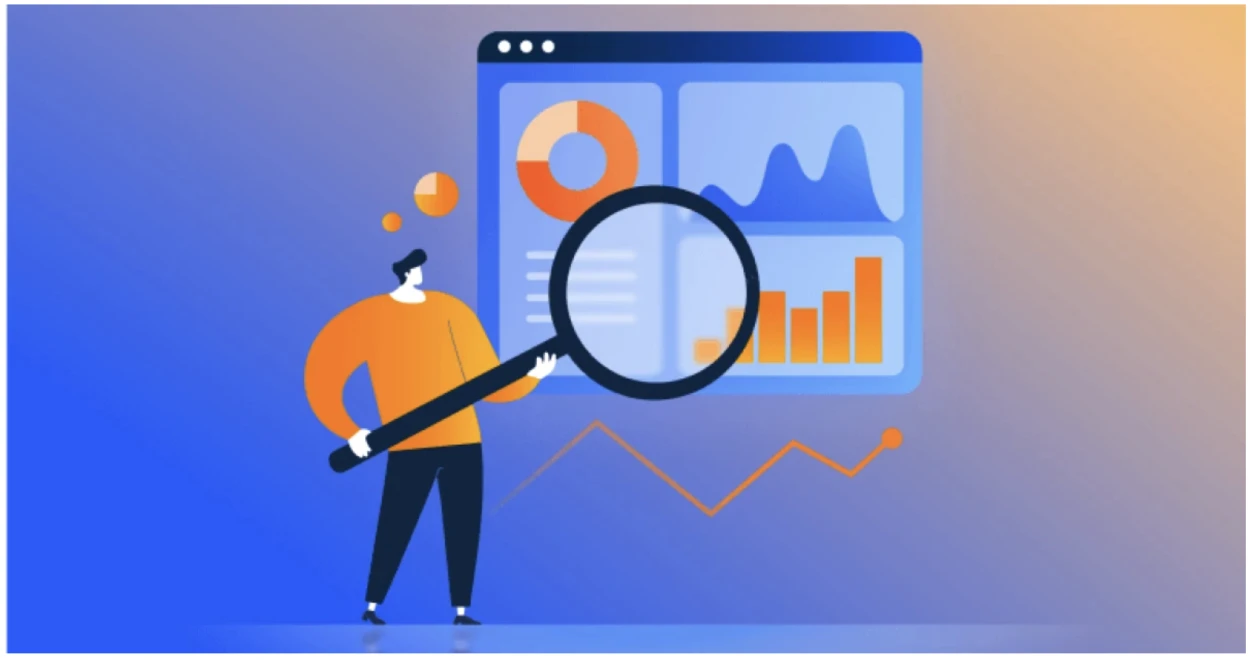
Beyond understanding how people behave, AI in marketing can also spot what’s trending in society and forecast upcoming product trends by analyzing social media posts and product reviews across different platforms. Social media is now a vital arena for advertising and promotions.
By using social media trends as a guide, marketers can better anticipate what consumers like, what they want, and how these preferences might evolve. Consequently, AI in marketing aids human marketers in anticipating future market needs, refining products, and planning future marketing campaigns.
Example- Trending Feature in Smartphones
Imagine you’re a company that sells smartphones. You want to know what features customers are looking for in their next smartphone. In the past, you might have conducted surveys, gathered feedback, and analyzed market research to make educated guesses.
Now, with AI in marketing, you can go a step further. AI can scan social media platforms, product reviews, and discussions to see what people are talking about when it comes to smartphones. It can pick up trends and buzzwords like “foldable screens,” “long battery life,” or “improved camera quality.”
By analyzing this data, AI can tell you that there’s a growing trend in the market for smartphones with foldable screens. People seem excited about this feature. AI can also pinpoint concerns customers have, like wanting longer battery life.
With this information, you can make more informed decisions. You might decide to invest in developing a smartphone with a foldable screen and focus on improving battery life. You’re now better aligned with what your customers want, and you can plan your marketing campaigns and product development accordingly.
So, AI in marketing helps businesses stay ahead of the curve by analyzing social media and product reviews to spot trends and preferences, which can guide them in creating products that cater to current and future customer demands.
4. Programmatic Advertising: Smart Ads with AI
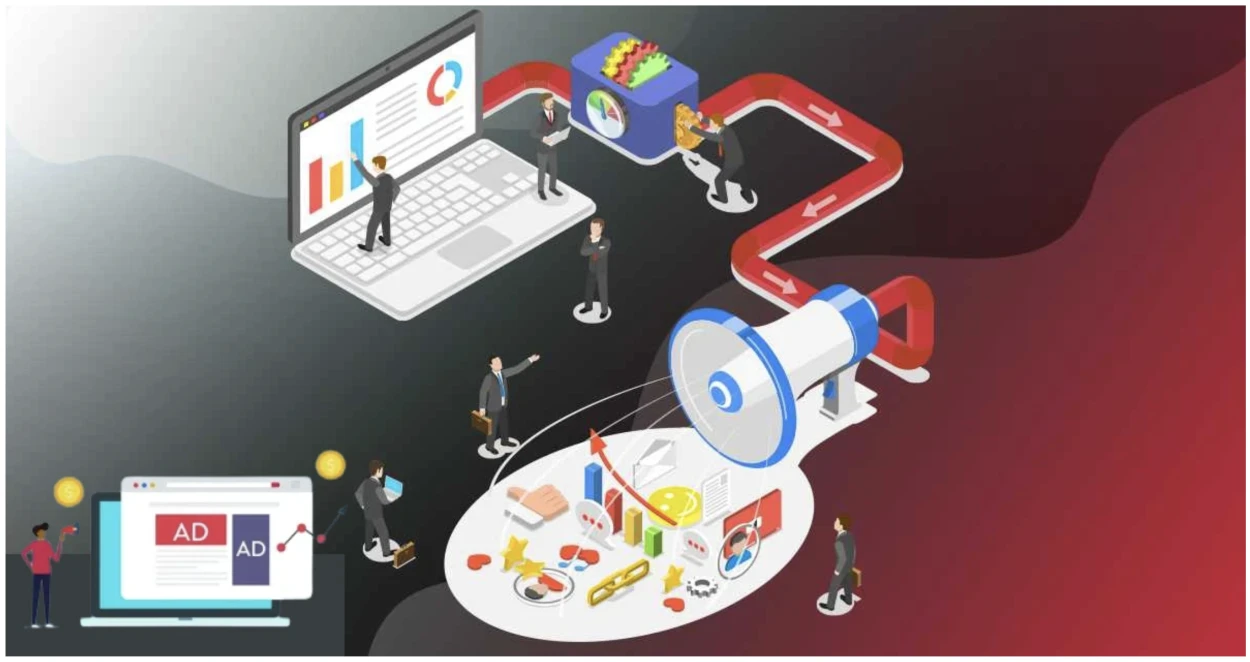
Smart ads, powered by AI, do things automatically. Yes, they buy and sell ads in a snap. Sounds like magic. Isn’t it? AI checks out data and what people do to make ads better. It helps choose who should see the ads, where they should go, and how much to pay. This saves time and makes ads work better. They reach the right people with the right message at just the right moment. This means ads do well and make more money.
How does it work? You may wonder. Go through the following example and you will know it!
Example: Pop-Up Ads
Imagine you run a small bakery, and you want to advertise your delicious cupcakes. In the traditional way, you might have to call various newspapers, radio stations, and billboards to buy ad space. You would also have to decide when and where your ads should appear.
Now, let’s bring AI into the picture.
You decide to use programmatic advertising, which is like having a smart helper. This AI system looks at a ton of information, like what flavors of cupcakes people like, what time they usually order, and where they live.
Based on this data, AI makes sure your cupcake ads pop up on social media, food blogs, or websites when people who love cupcakes are most likely to see them. It even figures out how much to spend on each ad to get the best results. So, your ads are seen by the right people at the right time, making your bakery more popular.
In a nutshell, programmatic advertising, with the help of AI, takes away the headache of deciding where and when to advertise. It automates the process, saving you time and ensuring your ads are super effective in reaching your ideal cupcake-loving customers.
Note: When it comes to ads, video ads seem to be quite effective. But don’t you wonder what the perfect duration of video ads should be? To know more, go through the article “Longer Video Ads vs Shorter Video Ads: Which works better?”
5. Chatbots and Virtual Helpers: Smart Interaction with Customers
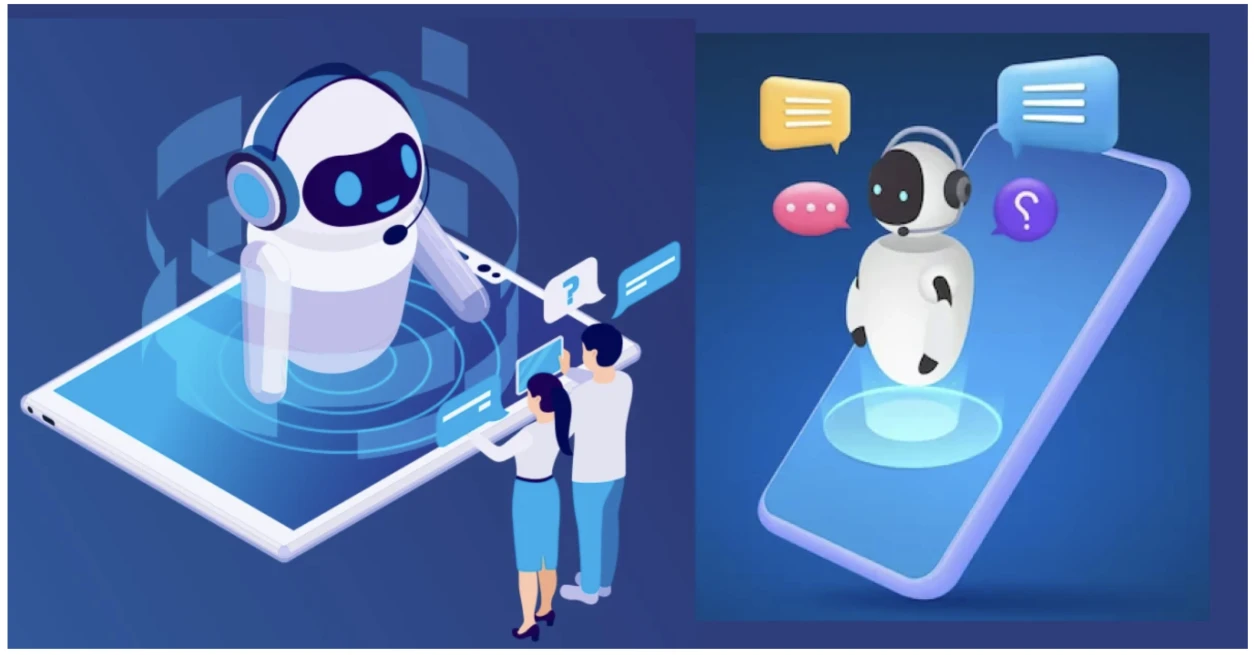
AI-driven chatbots and virtual assistants are changing the way companies interact with their customers. These smart chatbots and helpers can chat with customers right when they need it.
They can answer questions, suggest products, and give personalized help. Chatbots are great at doing the same tasks over and over and can be there to help 24/7. This makes customers happy and keeps them loyal to the brand.
Let’s look at an example of how AI-powered chatbots and virtual assistants are transforming customer service.
Example: Transformation of Customer Service
Suppose you have an issue with a product you bought online, and you need help. In the past, you might have had to wait on hold for a long time or send an email and wait for a response. But now, many companies use AI-powered chatbots on their websites or in messaging apps.
You visit the company’s website and a chat window pops up with a friendly virtual assistant. You type in your problem, and the chatbot responds almost instantly, asking a few questions to understand the issue better. Based on your responses, it provides a solution or connects you to the right department for further assistance.
This is like having a helpful friend who’s always available to assist you, day or night. The chatbot doesn’t get tired, and it can handle many customers at once. It can also remember your previous interactions, making the service more personalized over time.
So, AI-powered chatbots and virtual assistants make customer service faster, more convenient, and available 24/7. They not only improve customer satisfaction by providing quick solutions but also enhance brand loyalty because customers appreciate the efficiency and helpfulness of the service.
6. Creating and Enhancing Content with AI
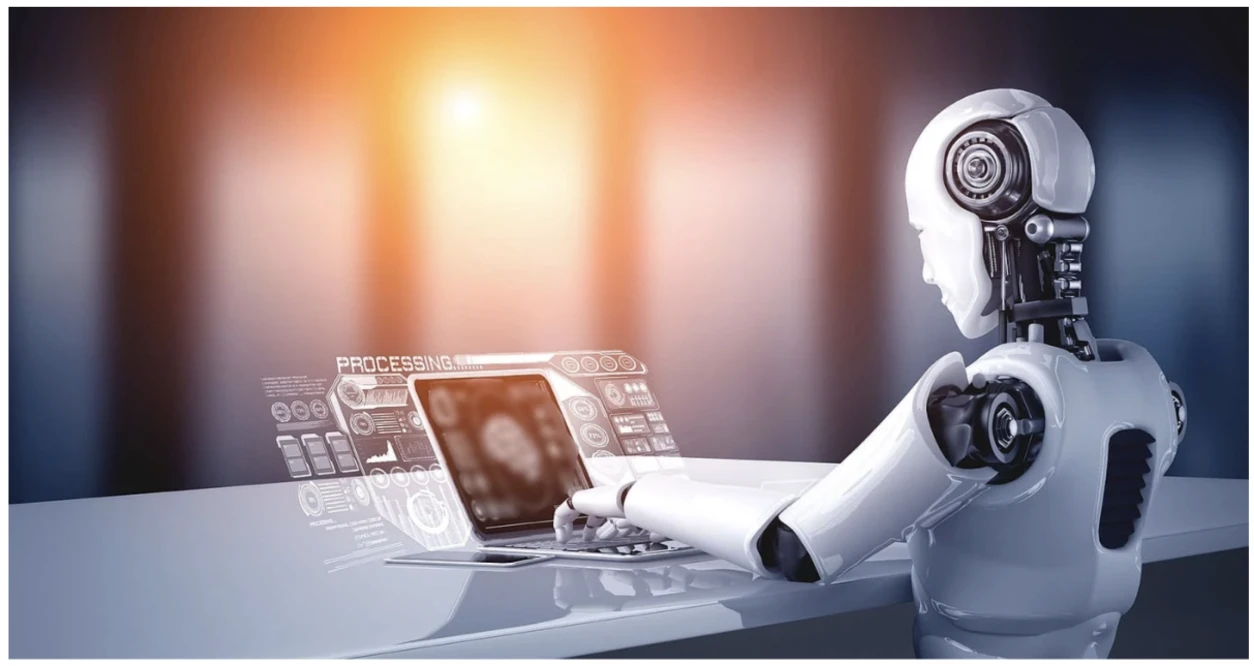
Artificial intelligence is employed to make and improve marketing content. With the help of Natural Language Processing (NLP) algorithms, AI can create various products. Such as personalized emails, product descriptions, and social media posts by looking at what customers like and how they behave. AI-driven content tools check how well the content is doing and offer suggestions to make it more engaging and better at getting people to take action.
Let’s dive into how AI is used for content creation and optimization with an example.
Example: Personalized Emails & Descriptions
Consider a scenario where you run a small online clothing store, and you want to send out an email to your customers about your new spring collection. Now, you have a long list of customers with different preferences and styles they like. It’s impossible to write a personalized email for each customer manually.
This is where AI, specifically Natural Language Processing (NLP), comes in. You input your customer data into an AI tool. The tool understands the data and can write personalized email content for each customer. For someone who prefers bright colors and casual wear, the email might talk about your vibrant spring collection and comfy outfits. For someone else who likes formal wear, it would emphasize elegant spring clothing.
But AI doesn’t stop there. After you’ve sent out these emails, it also helps you analyze how well they are doing. It checks things like how many people opened the email and how many actually made a purchase after reading it. If the email isn’t performing well, AI provides suggestions on how to make it better, like changing the subject line or using different images.
So, AI makes your email marketing more personalized and effective. It ensures that your customers receive content that’s just right for them, increasing the chances of them engaging with your brand and making a purchase. This way, you save time, reach more customers with relevant content, and ultimately grow your business.
Note: Do you know that Open AI started a war in the segment of content creation by AI? Go through the article “Major ChatGPT competitors” to get detailed information.
Wrap-Up: AI is transforming the marketing
In wrapping up our discussion on AI is transforming the marketing, it’s clear that AI is truly revolutionizing the marketing landscape. It’s like having a super-smart assistant that can personalize content, predict trends, and understand consumer behavior. This means better customer experiences, more efficient marketing, and smarter decision-making for businesses.
As we look to the future, AI’s role in marketing is only going to grow, making it even more dynamic, data-driven, and customer-focused. So, whether you’re a marketer or a consumer, get ready for AI to make your interactions with brands more engaging and relevant!
